Watercolour is often praised for its vibrant and luminous nature.
However, if you don’t know how to show these qualities in your artwork, you’re likely to end up with a dull watercolour painting.
So, you must understand what makes watercolour appear dull.
Your watercolour painting looks dull because you lack the colour theory knowledge and mixing skills that are necessary to create vibrant and luminous colour mixes. As a result, you produce muddy colours that look dirty and washed-out. As well, the quality of your pigments might be poor.
So, do you struggle with these common watercolour problems? If you do, fear not!
Because it’s time to explore several solutions that will transform your dull paintings into colourful and beautiful works of art!
Table of Contents
How Do I Make My Watercolour Paint More Vibrant?
Two of the best qualities of watercolours paintings is to create vibrant works of art that are luminous and translucent.
This means that the bright pigment shines through each layer.
However, this can’t be done if the paint dries with a dull, lackluster appearance.
So, what’s the solution?
You can make your watercolour paint more vibrant by learning how to mix paints that don’t contain too many pigment properties. Purer pigments that contain fewer properties blend more harmoniously together. So when you layer these paints, each layer looks richer and more vibrant.
Many pre-made black paints that come in watercolour sets are notorious for having many pigment properties.
For example, Neutral Black from my White Nights Watercolours set is made up of the following pigment properties:
- PR187 (PR = Pigment Red)
- PB15:1 (PB = Pigment Blue)
- PBk7 (PBk = Pigment Black)
In this case, Neutral Black contains red, blue, and black pigments that are all distinct from one another.
Therefore, if I mix Neutral Black with a colour like Cadmium Lemon, which is made of PY35 (PY = Pigment Yellow), the yellow pigment will clash with the blue pigment found in Neutral Black.
As a result, mixing these colours together produces a dull shade of grey because the blue and yellow pigments clash, thus creating an ugly green that is darkened by the black pigment.
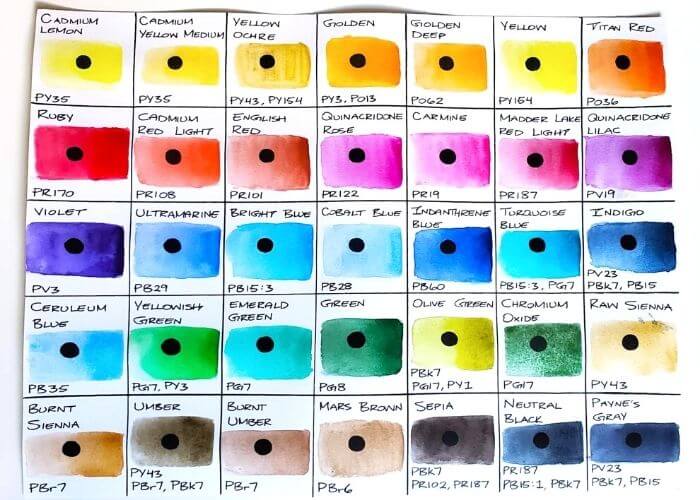
You can take a look at the chart above to observe the pigment properties that I’ve labelled beneath each paint.
For this reason, I advise you to study your watercolour paints by making colour swatch charts and watercolour mixing charts.
By doing so, you’ll know how to mix watercolour paints properly in order to understand why your watercolour mixes look bad and how to fix them.
Why Do My Watercolour Paintings Look Chalky?
Another common problem with dull watercolour paintings is that they look chalky or milky after the paint has dried.
Luckily for you, it’s easy to learn how to fix chalky watercolour.
Your watercolour paintings look chalky because you’re using cheap paints that contain too many fillers. These low-quality paints are too opaque, which makes them look chalky. To fix this problem, upgrade your paints and refrain from overmixing them in order to create vibrant, translucent layers.
The best solution is to upgrade your low-quality, student grade paints to a professional or artist grade watercolour set.
By doing so, the paints will contain fewer fillers. This means the pigments will mix more easily and dry with greater vibrancy and transparency.
Related: Check out this article to learn how to prevent mixing muddy colours.
Essentially, that means you should use a limited watercolour palette.
As well, don’t mix too many different pigments into one mixture. Otherwise, your mixture can appear too opaque or chalky.
As well, make sure know how to achieve good water control with the right paint-to-water ratio because by doing so, your layers will appear translucent instead of chalky.
After all, you’re paint with watercolours which as delicate and transparent. So don’t paint with them in the same manner as you would when creating an acrylic painting because those paints are thicker and opaquer.
How Do You Brighten a Watercolour Painting?
We’ve already discussed the importance of understanding your paints’ pigment properties in order to produce mixes that are vibrant.
But now, you need to take it one step further and learn about colour theory.
You can brighten a watercolour painting by learning about the basics of colour theory, including how to use complimentary colours to brighten or darken a pigment. As well, you should avoid using pre-made white and black paints because they make colour mixes look dull.
When you study colour theory, you learn about the strategy that watercolourists use to mix their paints more meticulously and accurately.
Related: Check out this popular article to learn about the basics of colour theory.
As a result, you’ll waste less paint and create brighter, more vibrant mixes. This will certainly help you avoid making dull watercolour paintings in the future.
When you know how to use complimentary, analogous, triadic, and other colour schemes in your artwork, you’ll have a better understanding of how to use these colours to manipulate colour in an aesthetically appealing manner.
A final tip is to swatch each colour you plan to use in your painting before you start working on it.
This way, you’ll know which pigments work well together in advance, and you’ll avoid the headache of accidentally producing dull or icky colour mixes.

What is the Best Watercolour Paint?
Unfortunately, if you’re currently using a low-quality or student grade set of paints, this may be the reason why you keep creating dull watercolour paintings.
You see, cheap watercolour paint sets are made of low-quality pigments that are loaded with fillers. These fillers contain less pure pigment in order to make the paints more affordable.
However, the trade off is that the fillers make the pants appear chalky and opaque. When these pigments dry, they dry much lighter and with less vibrancy.
On the other hand, high-quality artist grade paints are made from superior ingredients with purer pigments.
When these paints dry, they appear much more vibrant, transparent, and luminous compared to cheap paint sets.
So, the solution is to upgrade your paint set to a high-quality professional grade set. If you want watercolours that dry very vibrantly, invest in tube paints.
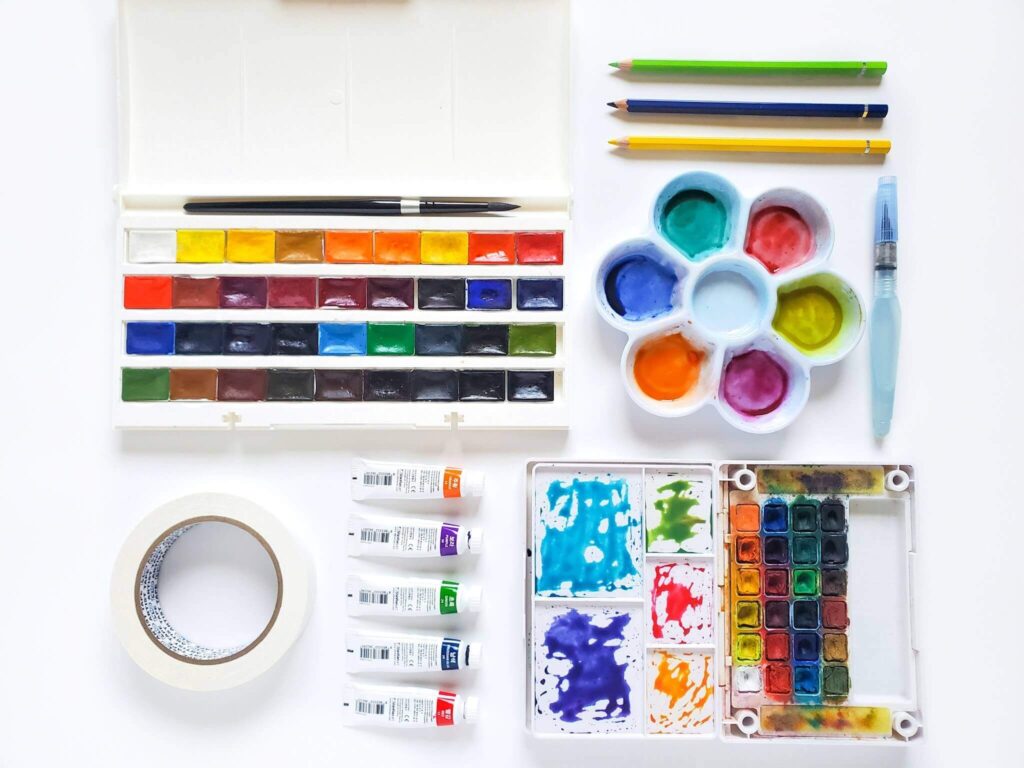
In addition, you probably need to upgrade your watercolour paper.
If you’re painting on cheaper paper that’s made of wood pulp or cellulose, the material isn’t very sturdy or high-quality.
When you lay down watercolour on this type of cheap paper, the pigments will dry lightly and with less vibrancy, thus resulting in a dull watercolour painting.
So, if you’re looking for better quality paper that will enhance your paints’ vibrancy, I highly recommend that you invest in 100% cotton watercolour paper because it is the most ideal.
Related: You can check out My Art Supplies for a list of recommended watercolour paints and paper.
Avoid Painting with White and Black Watercolour
Last but not least, we need to talk about one of the common watercolour mistakes that beginners make.
That mistake is mixing your pigments with white and black watercolour.
You should avoid mixing premade white and black paints with your watercolours because white has a tendency to produce mixes that look chalky. And black watercolour contains too many pigment properties, which can make it difficult to mix with other paints without making the mixture look muddy.
White watercolour has a tendency to make paint mixes appear chalky or milky, which isn’t very appealing to look at.
The simple solution is to avoid white watercolour and learn to use the white of the paper instead. By doing so, you can learn to:
- Use the white of the paper to create highlights
- Let the whiteness shine through when painting clouds, snow, etc.
- Create more brightness and luminosity naturally
On the other hand, black paint also poses a lot of problems.
As we previously discussed, premade black paint is often made from many individual pigment properties.
The more properties that are mixed together in a single mix, the greater the likelihood that they won’t combine well with one another due to their clashing properties.
So, it’s best to either mix your own black paint from pure pigments, or learn how to mix complimentary colours to create beautiful dark shades of your desired hue.
Lastly, black watercolour has a tendency to make the colours dry in a way that is one-dimensional and flat. (Unless, of course, you’re painting galaxies.)
For this reason, avoid black watercolour unless you’re just adding small details.
Conclusion
As you’ve learned, there are many reasons that contribute to a dull watercolour painting.
Despite these challenges, there are numerous ways to work around the issue of dullness.
For example, you’ve learned about the importance of understanding the pigment properties of your paints, as well as the importance of learning about colour theory.
You’ve learned about the most common reasons that lead to chalky watercolours and how to avoid them, as well as how to mix colours successfully so as to avoid creating muddy colours.
With all of this knowledge, it should now be easier for you to create beautiful, vibrant watercolour paintings ever single time you sit down to paint!
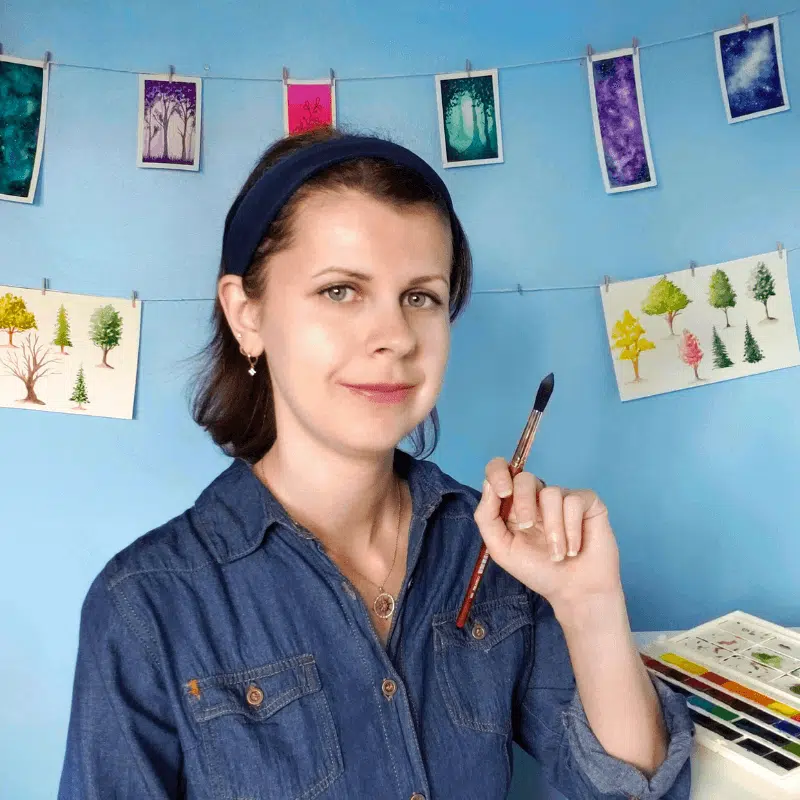
Miranda Balogh
Artist & Online Educator

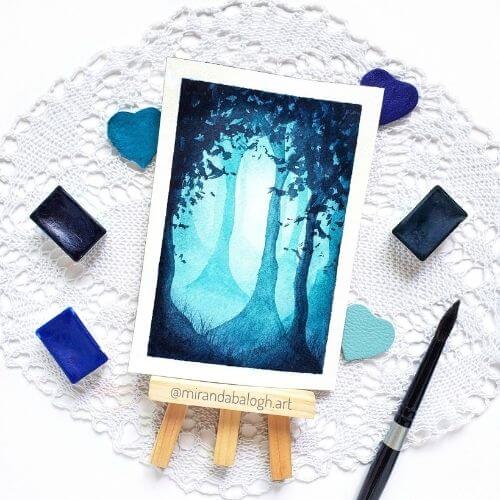
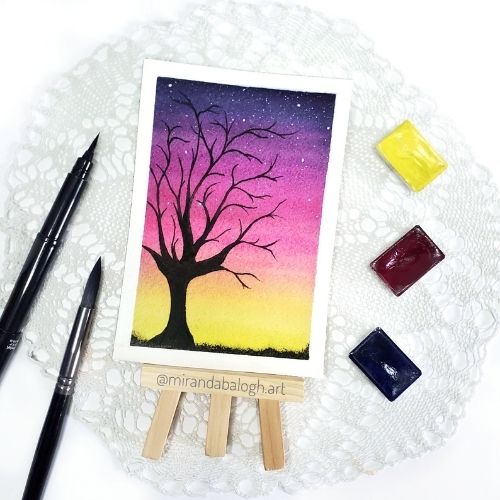
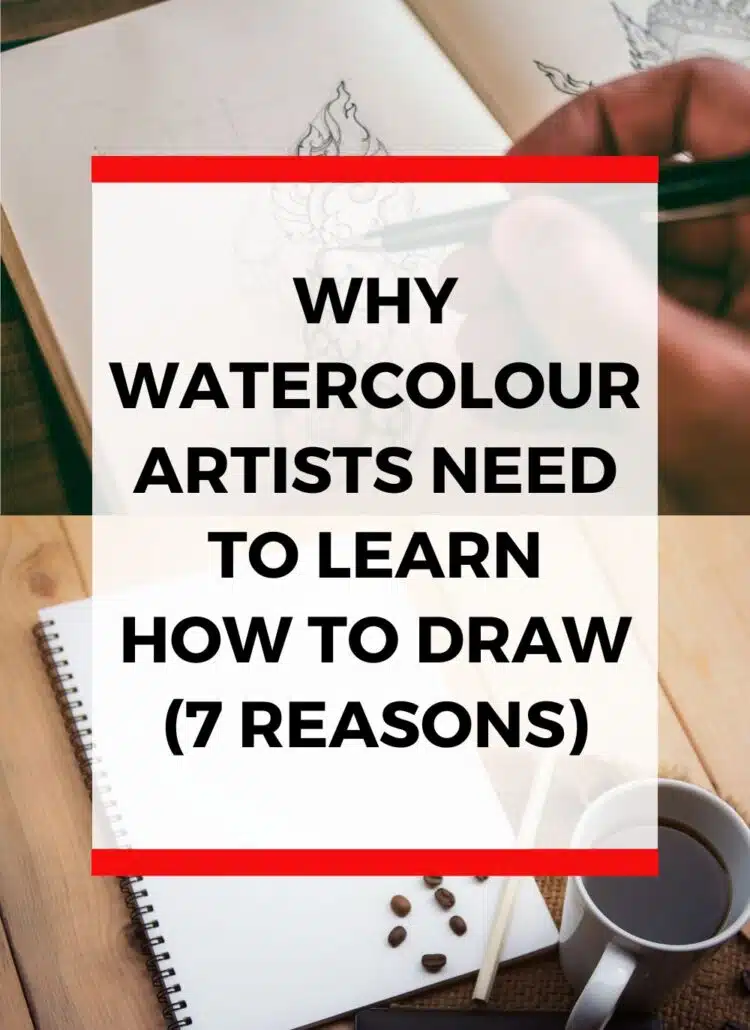
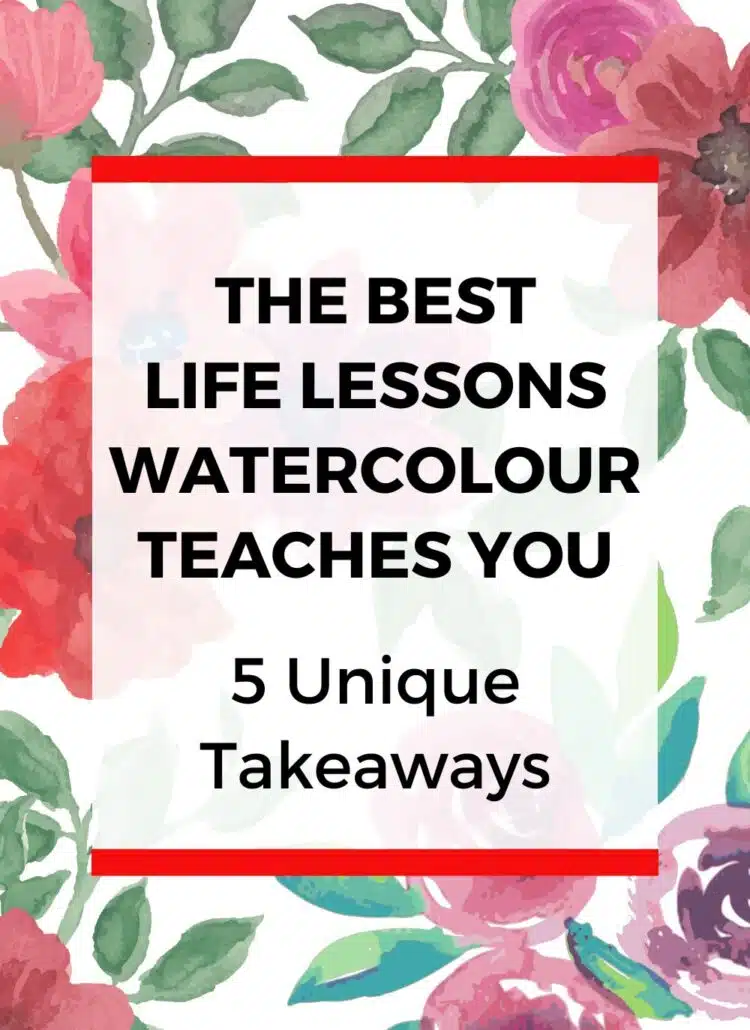
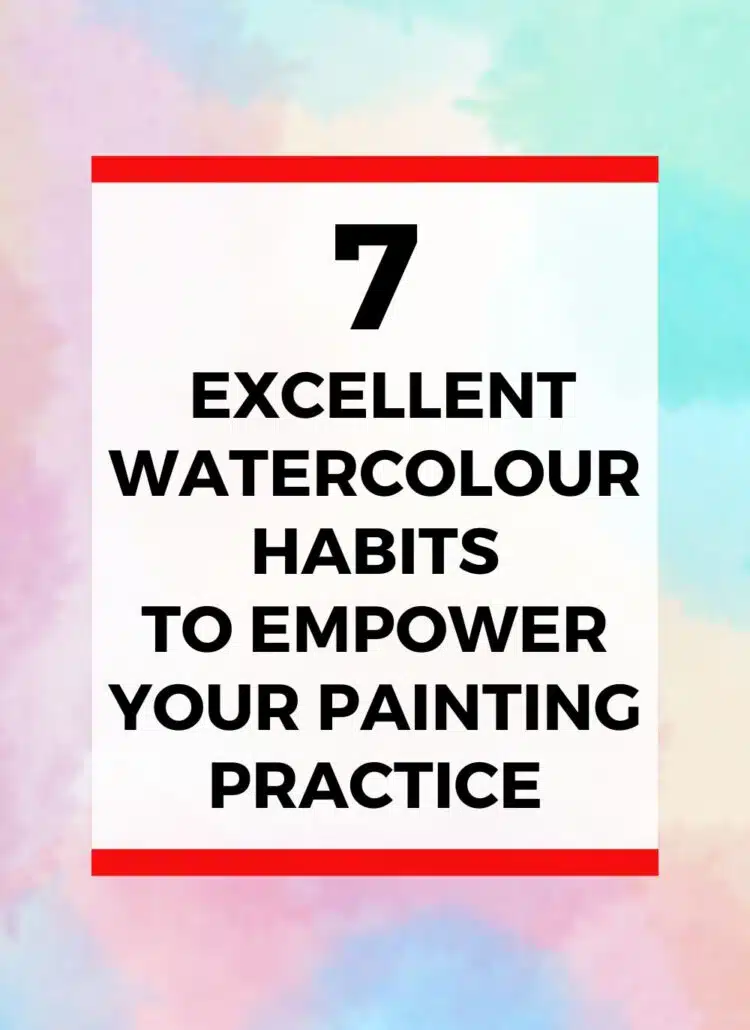
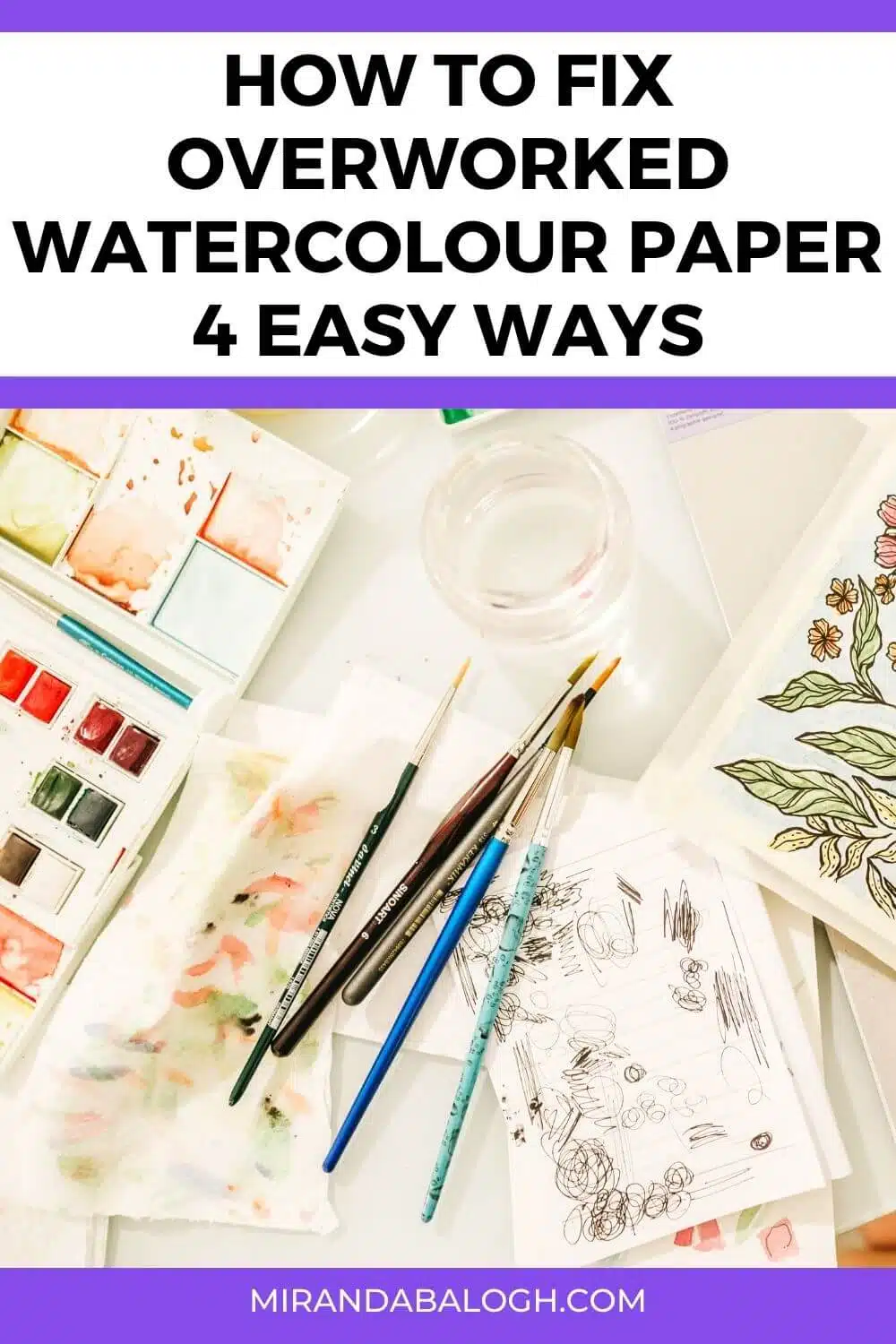
Very informative and this will help a lot of painters both beginners and pro ☺️ Love it
Thank you for the positive feedback!
this is so informative. I always wanted to try watercolor but I feel its too hard and since I dont know if I can actually do it
You’ll never know until you try, right? So I encourage you to give it a shot because for all you know, you could be amazing at watercolour painting!
Golly! So much to think about, all the mixes and theory. Thanks for helping to sort it all out and provide direction. 🙂
I’m glad I could help!
Thanks for the tips! I hadn’t thought about how the typical black is affecting my other paints. I’m definitely going to make a color chart for the next time I use black. Thank you for sharing!
Thanks! I’m glad you found this article helpful.
It’s worth investing in quality materials to obtain good results. There’s a reason why premium grade paints cost more than school grade ones!
And yes, definitely a good, heavy paper is key so you don’t end up with a warped mess.
Thanks for your post.
You’re welcome! And yes, I definitely agree that using high-quality materials can improve the overall quality of watercolour paintings.
I’m learning so much about watercolor for my son! He has taken a daily interest in this art form and your blog is helpful!
I’m glad to hear that your son is enjoying painting with watercolours!
Wow, this is so detailed and useful!
Thanks! I’m glad it served you well.
I did not know that you can fix the chalky watercolor. Thanks!!
Yup, you can! And luckily, it’s pretty easy to fix.
I’m looking forward to using the watercolors soon for my DIY crafts. Great post about it.
Thank you! I hope your DIY crafts go well.
Such an informative post with great tips regarding watercolor and issues of dullness. Thank you once again for sharing insightful suggestions. 😊
Pastor Natalie (ExamineThisMoment)
You’re welcome! I’m glad you’re getting value from my articles.